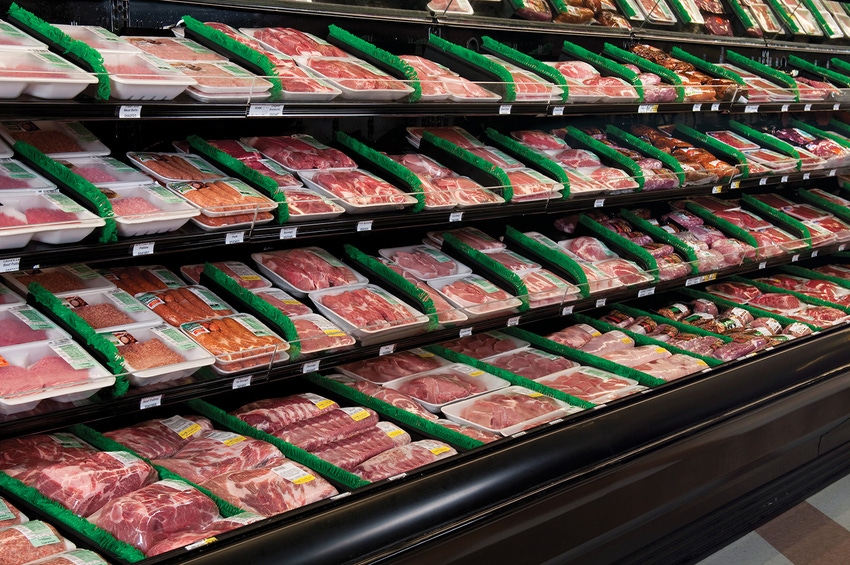Pandemic brings changes for Thanksgiving meat sales
Number of people who planned to host, attend Thanksgiving meal with extended family dropped to 26%.

This year has been a year like no other. For the meat industry alone, which is largely accustomed to glacial change, the pandemic prompted unnerving times requiring warp-speed decision making and continued pivoting. Eight months into the pandemic, Anne-Marie Roerink, president of 210 Analytics LLC, says the virus remains in firm control of how and where people spend their food dollars.
In November, the rapidly rising number of new COVID-19 cases caused renewed restrictions in numerous states. Combined with winter weather, restaurants in many Northern states were once more limited to takeout and delivery. All of this formed the backdrop for Thanksgiving 2020.
“Our late October survey pointed to very different Thanksgiving celebrations,” said Jonna Parker, team lead fresh for IRI. “The number of people who planned to host or attend a Thanksgiving meal with extended family dropped from 48% in 2019 to 26% this year. Additionally, few planned to travel out of state, gatherings were expected to be smaller, shoppers indicated they may be looking for a smaller turkey or another meat, and many planned to shop earlier to avoid crowds. All these plans pointed to many potential changes for the meat department in a faceoff between Thanksgiving traditions and COVID reality.”
Thanksgiving meat department performance
While restaurants certainly take some of the Thanksgiving food spend in typical years, Roerink said the holiday is largely a retail-focused expenditure. This, she said, makes beating last year’s result a much harder feat than say Mother’s Day or Valentine’s Day, which are big dining out holidays.
Additionally, many people shopped earlier or diverted purchases online, which, in some cases, was encouraged by retailers in order to manage traffic flow during one of the busiest shopping weeks of the year.
“Some retailers provided free delivery, ramped up their curbside order slots and encouraged earlier shopping. Many closed their doors altogether on Thanksgiving Day to provide the team a much-needed break and a few closed their doors on Black Friday, a traditionally slow day for grocery retailing,” said Roerink.
The total meat department experienced a 5.4% boost in sales the week of Thanksgiving, but the two weeks leading up to the holiday week were massive for the fresh meat department, at 17.5% and 19.9% higher.
“Thanksgiving meat department dollar sales benefitted from some inflation as well,” said Parker. For the four-week period, the average price per volume was up 7.6% versus year ago levels. Retailers did invest in price the week of Thanksgiving with the lowest increase in price per volume in many weeks, up 7.1%.
Volume sales saw a big boost the weeks ending November 15 and 22 versus year ago. Pound sales during Thanksgiving week, on the other hand, were actually off slightly, though IRI data does not yet include new items that are still being processed.
“People told us they were shopping earlier, and it certainly seems that they did just that,” said Peter Swanson with IRI’s Fresh Center of Excellence. “In all, retailers sold more than 115 million additional pounds during the four weeks leading up to Thanksgiving for a gain of 5.8% versus year ago. Once we factor in the ecommerce dollars that we saw gearing back up in October and November after tapering off during the summer months, it is safe to say that the Thanksgiving selling season was strong, yet different.”
According to Roerink, speculations ahead of the holiday were for a demand for smaller turkeys to account for the smaller size of gatherings. However, smaller turkeys may simply not have been available. Turkey sales in dollars and volume were strong the two weeks leading up to Thanksgiving week, but the holiday week itself saw lower performance. The four-week price per volume was up 7.8% for turkey, which boosted dollar sales for the period to an increase of 7.3%, but pound sales were off slightly prior to adding in new items for the season.
“More than anything, Thanksgiving 2020 was not all about the whole turkey, but at the same time, many people did not want to give up the Thanksgiving turkey traditional altogether either,” said Swanson. In all, whole bird turkey increased 3.0% in dollar sales over 2019, but turkey breast and wings took home the largest gains, albeit of a much smaller base.
Roerink relayed that beef was one of the beneficiaries of the different Thanksgiving celebrations and has been a pandemic powerhouse since the onset of coronavirus. Much like the pattern seen for turkey, beef had two very strong weeks leading up to the holiday. Thanksgiving week itself showed year-over-year increases in dollars and volume as well, but lower than the two preceding weeks.
Ribeye had an extremely strong November, including Thanksgiving week, as did ribs and loin, Roerink noted.
Pork, on the other hand, had very little help from inflation, with prices up a mere 3.0% over year ago levels during the four week period. Still, it remains a very strong number three behind beef and chicken, said Parker.
Pork sales for the four-week period were up 11.5% in dollars and 8.2% in volume, with the strongest performances seen for the weeks leading up to the actual holiday week.
Strong performers within fresh pork for the four-week period were:
Pork ribs: up 21.6%
Pork shoulder: up 13.7%
Pork leg (fresh ham): up 13.1%
In addition to strong results for fresh pork, smoked ham saw 4.5% dollar gain over year ago levels and a 5.0% increase in pounds.
Roerink explained that chicken is normally not a very strong Thanksgiving contender but that it may have provided some smaller portion options for households opting out of the whole bird turkey. Chicken sales increased 12.4% over the four-week period and increased dollars and volume all four weeks.
Looking ahead, Roerink suggested the December holidays are likely to look very different, as well.
“Our November primary shopper survey found that many Americans are planning to reduce their gatherings as they did for Thanksgiving,” said Parker. “Only one in four plan to celebrate with others outside their household, about half the rate of last year.”
One in three shoppers expect to spend less on groceries for the December holidays, primarily due to hosting fewer/no guests this year or cutting back to save money. Online-only retailers are the only channel where shoppers expect to spend more this year than last year in terms of overall holiday spending.
For New Year’s, 30% plan to celebrate at home without guests, while only 5% of primary grocery shoppers plan to go to a party/gathering, 4% host others, and 3% plan to go to a bar/restaurant. Ten percent of those who celebrated last year won’t do anything to ring in the New Year.
About the Author(s)
You May Also Like




